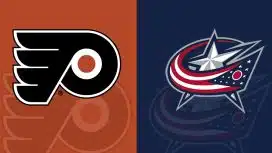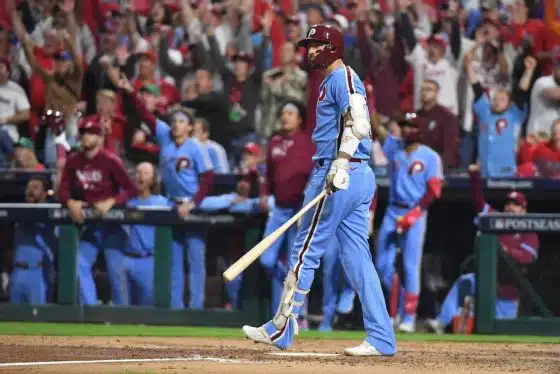Uncategorized
Michael Raffl, The Sparkplug
(picture via philly.com)
The play of Michael Raffl has been a surprising revelation for most Flyers fans so far this season. Entering the year as an unproven undrafted free agent who played in the second level of Swedish pro hockey last year, not much was expected from him. The Flyers, however, saw things differently than the fan base and gave him Simon Gagne’s #12 and he stayed with the team for much of training camp (likely at the expense of Gagne’s potential roster spot). Through 46 games, Raffl has recorded 7 goals and 11 assists while playing in nearly every situation imaginable. He jump-started Claude Giroux and Jake Voracek on the top line for a while and didn’t look out of place while doing so. He’s currently stabilizing the fourth line with Zac Rinaldo and Adam Hall. He’s also had stints on the second and third lines, and currently leads the Flyers in points per 60 minutes at even strength despite all the changes.
By nearly any measure, Raffl has been one of the Flyers’ best possession players this year. He’s 5th on the team in Fenwick For % at 51.3%, behind only Jakub Voracek, Kimmo Timonen, Scott Hartnell, and Claude Giroux. His Corsi For % also ranks 5th on the team behind the same four teammates and is even better at 52.4%. His Corsi Rel, taking into account quality of teammates, competition, and zone starts, is a very solid 7.3-again, 5th on the team. It’s no coincidence, then, that the majority of the lines that Raffl has spent time on have seemed to click better when he’s a member of them. I decided to take a look at the extent to which that was true with a WOWY analysis.
|
Player |
TOI with Raffl |
CF% with Raffl |
TOI without Raffl |
CF% without Raffl |
CF% difference |
|
Giroux |
243:25:00 |
56.40% |
614:08:00 |
51.10% |
-5.30% |
|
Coburn |
209:09:00 |
54.20% |
808:52:00 |
50.60% |
-3.60% |
|
Voracek |
194:48:00 |
58.50% |
564:46:00 |
53.50% |
-5.00% |
|
Timonen |
170:40:00 |
56.00% |
563:58:00 |
54.10% |
-1.90% |
|
Grossmann |
164:23:00 |
45.60% |
755:49:00 |
45.00% |
-0.60% |
|
Streit |
161:42:00 |
48.40% |
782:23:00 |
47.90% |
-0.50% |
|
Schenn, L. |
137:23:00 |
54.10% |
651:05:00 |
47.40% |
-6.70% |
|
Simmonds |
102:31:00 |
56.80% |
638:59:00 |
47.80% |
-9.00% |
|
Meszaros |
96:23:00 |
54.90% |
414:29:00 |
47.50% |
-7.40% |
|
Couturier |
96:20:00 |
50.90% |
691:18:00 |
48.30% |
-2.60% |
|
Schenn, B. |
93:55:00 |
51.80% |
666:45:00 |
47.30% |
-4.50% |
|
Gustafsson |
79:50:00 |
55.60% |
323:15:00 |
48.00% |
-7.60% |
|
Hall |
77:36:00 |
41.50% |
291:25:00 |
42% |
0.50% |
|
Read |
62:53:00 |
47.70% |
625:35:00 |
49.10% |
1.40% |
|
Rinaldo |
60:51:00 |
40.40% |
279:03:00 |
42.20% |
1.80% |
We see here that out of the 15 players who have spent at least 60 minutes on ice with Raffl at 5v5 (which includes all 7 defensemen who receive semi-regular playing time and 8 forwards, grouped in pairs from each of the 4 lines) that 12 of them have a better CF% with Raffl than without him. Giroux, Voracek, Luke Schenn, Simmonds, Meszaros, and Gustafsson are all at least 5% better with Raffl than without, a staggering difference. Nicklas Grossmann, Mark Streit, Adam Hall, Matt Read, and Zac Rinaldo are the only players with a CF% below 50% with Raffl. The three players who are worse off with Raffl (Hall, Read, and Rinaldo) also have the three smallest sample sizes of the group.
(picture via AP)
So does Raffl really make every line he plays on better? Well, the results vary. Giroux and Voracek are noticeably better with Raffl; Voracek’s 58.5% CF% would rank 15th among all forwards in the league if it was a full-season mark. Wayne Simmonds and Brayden Schenn are also both markedly better with Raffl: Simmonds is a full 9% better with Raffl than without, and Schenn’s 4.5% improvement is still sizeable. In a small sample size, his results are mixed with the third line. Sean Couturier’s CF% increases by 2.6% with Raffl, but Matt Read’s decreases by 1.4%. And finally, in a strange twist of irony, both Adam Hall and Zac Rinaldo both perform worse by Corsi standards (0.5% and 1.8% worse, respectively) with Raffl than without him. Considering Raffl has been credited with stabilizing the fourth line and turning into an offensive threat, this is definitely surprising to see. However, the sample size is still small, and it’s important to note that the CF%s with and without Raffl for both players are all below 42.2%; the results are poor in either case.
Another way to measure how much of this success is based on Raffl’s direct impact is to see how he fares when away from the other players.
|
Player |
Raffl TOI with |
Raffl CF% with |
Raffl TOI without |
Raffl CF% without |
CF% difference |
|
Giroux |
243:25:00 |
56.40% |
271:01:00 |
48.30% |
-8.10% |
|
Coburn |
209:09:00 |
54.20% |
305:17:00 |
51.10% |
-3.10% |
|
Voracek |
194:48:00 |
58.50% |
319:38:00 |
48.10% |
-10.40% |
|
Timonen |
170:40:00 |
56.00% |
343:46:00 |
50.60% |
-5.40% |
|
Grossmann |
164:23:00 |
45.60% |
350:03:00 |
55.80% |
10.20% |
|
Streit |
161:42:00 |
48.40% |
352:44:00 |
54.30% |
5.90% |
|
Schenn, L. |
137:23:00 |
54.10% |
377:03:00 |
51.80% |
-2.30% |
|
Simmonds |
102:31:00 |
56.80% |
411:55:00 |
51.30% |
-5.50% |
|
Meszaros |
96:23:00 |
54.90% |
418:03:00 |
51.80% |
-3.10% |
|
Couturier |
96:20:00 |
50.90% |
418:06:00 |
52.70% |
1.80% |
|
Schenn, B. |
93:55:00 |
51.80% |
420:31:00 |
52.50% |
0.70% |
|
Gustafsson |
79:50:00 |
55.60% |
434:36:00 |
51.80% |
-3.80% |
|
Hall |
77:36:00 |
41.50% |
436:50:00 |
54.20% |
12.70% |
|
Read |
62:53:00 |
47.70% |
451:33:00 |
53.00% |
5.30% |
|
Rinaldo |
60:51:00 |
40.40% |
453:35:00 |
53.80% |
13.40% |
So Raffl is better away from Grossmann, Streit, Couturier, Brayden Schenn, Hall, Read, and Rinaldo. He’s worse away from Giroux, Coburn, Voracek, Timonen, Luke Schenn, Simmonds, Meszaros, and Gustafsson. But that doesn’t tell the whole story. Raffl’s decreases away from Coburn, Luke Schenn, Simmonds, Meszaros and Gustafsson are all smaller than their decreases away from him, suggesting that he drives the play better than the other player in each of those cases. In addition, his increases away from Hall, Read, and Rinaldo are all larger than their increases away from him, again suggesting he’s the better play driver of the two. Raffl’s CF% is above 50% away from every player with the exceptions of Giroux and Voracek, suggesting an across-the-board ability to drive play.
So what does this tell us about Michael Raffl? He’s had some success with elite players like Giroux and Voracek, though that success is in part because of the other two linemates, and he seems overqualified for the bottom line, as his CF% jumps up by well over double-digits apart from Hall and Rinaldo. The answer, then, would seem to lie somewhere in the middle. He’s likely a middle-6 LW for this Flyers team who has been forced further down the lineup by the continued insistence on giving prime opportunities in the top-9 to Vincent Lecavalier. Personally, I think a line of Raffl-Couturier-Read could be an interesting one for the Flyers in the future; all three are smart, two-way players with some offensive creativity and defensive responsibility. Although the three of them haven’t had the best results together so far, the sample size is small. Raffl has partnered especially well with Wayne Simmonds and has done well with Brayden Schenn, so perhaps those three could form a solid second line for the Flyers. Either way, this much is clear: the Flyers found a diamond in the rough with Raffl, and while his production is nice, his ability to drive play forward is an especially valuable skillset that the Flyers for the most part lack through the lineup. It remains to be seen where he’ll fit in the Flyers’ lineup in the future, with Scott Laughton set to join the fold next year and a logjam in the top-9, but it’s safe to say that his versatility will allow him to fit in wherever Craig Berube and the Flyers decide to use him.












































